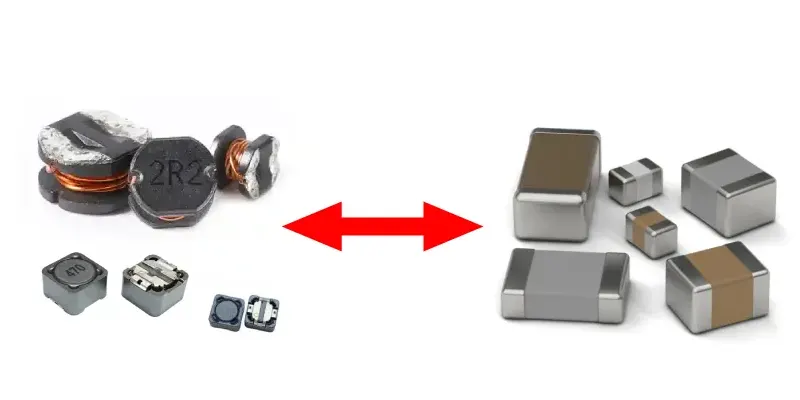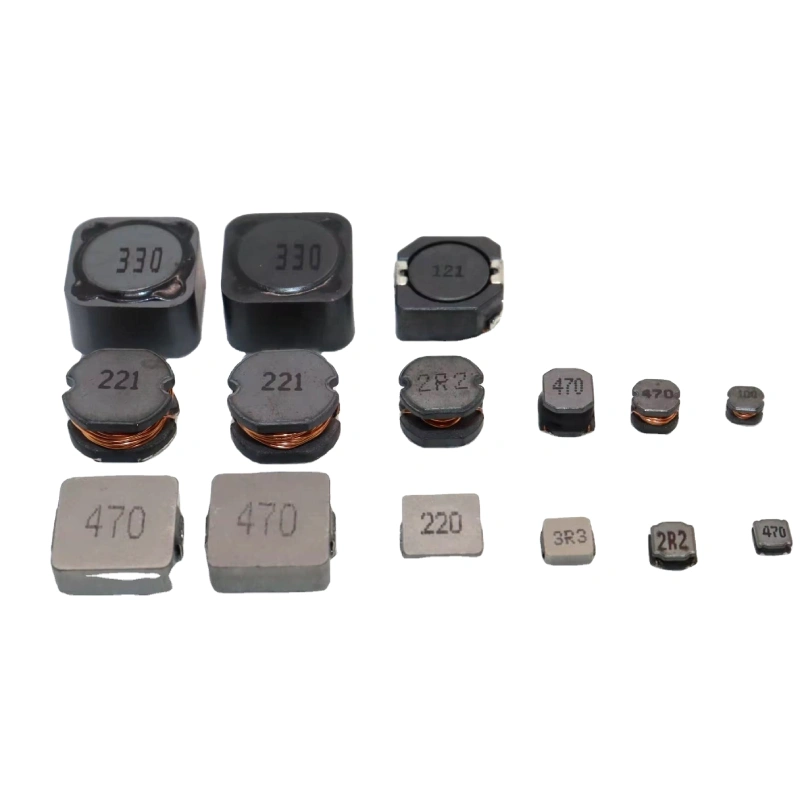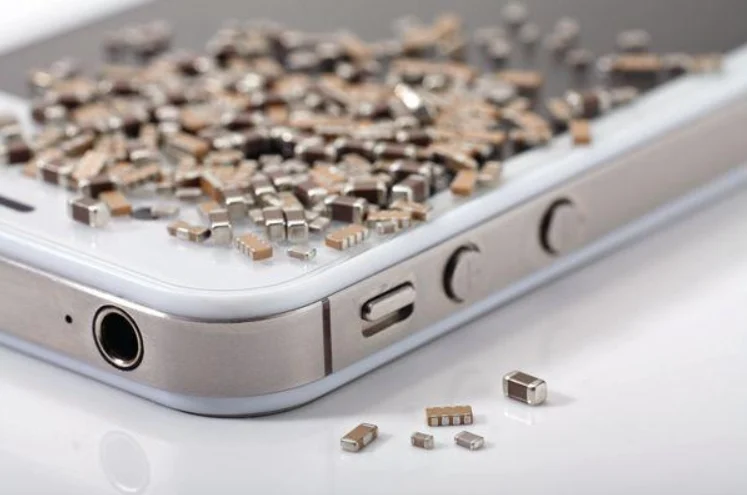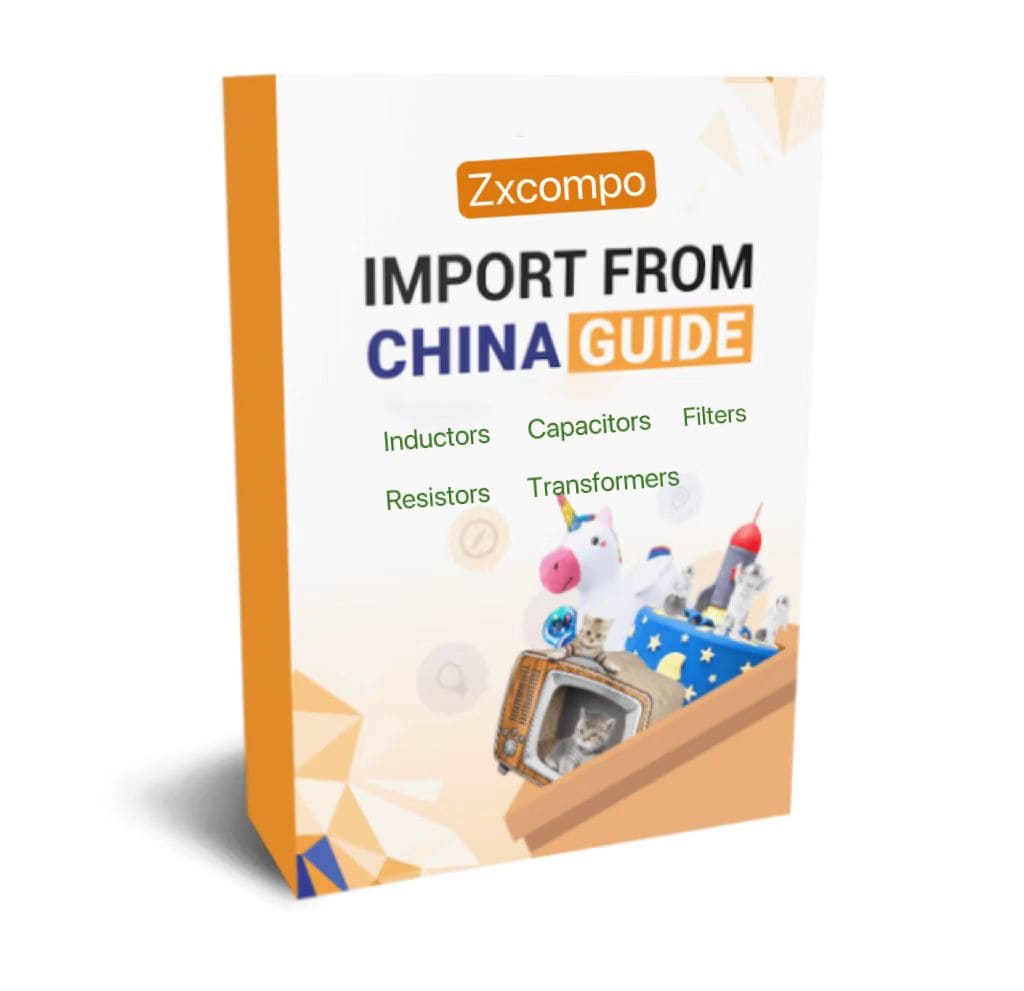Power inductors and ferrite beads have the same characteristics, that is, “passing DC and blocking AC”, so many people think that the two can be used interchangeably. In fact, there are still big differences between inductors and ferrite beads. In actual use, the two cannot be replaced. Moreover, the unit of inductance is “H”, and the unit of ferrite beads is “Ω”. Please note that this is the resistance value, not the equivalent inductive reactance.
(★If you want to know more information, you can refer to the following article: •Ferrite Beads Vs Inductors: Understanding The Differences And Applications)

1. Definition and Function of Power Inductors and Ferrite Beads
Both power inductors and ferrite beads are commonly used inductive components in circuits and play an important role in electronic devices.
A power inductor is an inductive device that can store Ferrite field energy in a circuit and guide current to flow in a specified direction. Power inductors are generally used in circuits such as power management or DC-DC converters.
Ferrite beads are also inductive devices made of ferro Ferrite materials. They can have high impedance, prevent radio frequency current from escaping, and improve the anti-interference ability of the circuit. Ferrite beads are often used in filters, power supplies, and radio frequency circuits.
2. Structure of Power Inductors and Ferrite Beads
The Ferrite material of the inductor is not closed. The typical structure is a Ferrite strip. Part of the Ferrite lines of force pass through the Ferrite material ( Ferrite strip), and part of it is in the air; while the Ferrite material of the ferrite bead is closed. The typical structure is a Ferrite ring. Almost all the Ferrite lines of force are in the Ferrite ring and will not be emitted into the air.
The Ferrite field strength in the Ferrite ring is constantly changing, which will induce current in the Ferrite material. Selecting Ferrite materials with large hysteresis coefficient and small resistivity can convert these high-frequency energies into heat energy and then consume them.
On the contrary, the inductor should choose a Ferrite material with a small hysteresis coefficient and a large resistivity so that the inductor can present a consistent inductance value in the entire frequency band as much as possible. Therefore, the difference in structure and Ferrite materials determines the essential difference between Ferrite beads and inductors.
3. Differences and Similarities Between Power Inductors and Ferrite Beads
There are Several Differences Between Power Inductors and Ferrite Beads:
1. Different materials. Power inductors usually use ferro Ferrite materials such as iron oxide, while ferrite beads usually use ferrite.
2. Different functions. The main function of power inductors is to store Ferrite field energy and guide current to flow in a specified direction, while the main function of ferrite beads is to have high impedance, prevent RF current leakage, and improve the anti-interference ability of the circuit.
3. Different application scenarios. Power inductors are generally used in circuits such as power management or DC-DC converters, while ferrite beads are often used in filters, power supplies, and RF circuits.
In theory, the Ferrite beads themselves are energy-consuming components, while inductors are theoretically non-energy-consuming. This is the biggest difference between the two types of components in theory.
However, power inductors and ferrite beads have some similarities:
1. Both are inductive components that can store Ferrite field energy in the circuit.
2. Both have a certain impedance.
4. Applicable Scenarios of Power Inductors and Ferrite Beads
In practical applications, the applicable scenarios of power inductors and ferrite beads are also different.
Power inductors are suitable for circuits that need to withstand high current and high power, such as AC power supplies, DC-DC conversion circuits, etc. In addition, power inductors can also be used in scenarios such as filtering noise and suppressing interference.
Ferrite beads are mainly used in high-frequency RF circuits and signal transmission circuits, which can effectively prevent the generation of electro Ferrite interference and RF noise, and improve the stability and reliability of the circuit.
In summary, power inductors and ferrite beads both play an important role in circuits, but their applicable scenarios are different. Understanding these differences can help us better choose suitable inductor devices, thereby achieving better circuit design effects.
5. The Role of Power Inductors and Ferrite Beads
Different roles mean that the two have different application areas. Inductors are mostly used in power filter circuits, and Ferrite beads are mostly used in signal circuits. Ferrite beads used for EMC are mainly used to suppress electro Ferrite radiation interference, while inductors are used in this regard to focus on suppressing conducted interference.
Although they play different roles in the circuit, both Ferrite beads and inductors can be used to deal with electro Ferrite interference. Ferrite beads are used to absorb ultra-high frequency signals. Some RF circuits, PLLs, oscillation circuits, and ultra-high frequency memory circuits (DDR SDRAM, RAMBUS, etc.) all require Ferrite beads to be added to the power input part, while inductors are energy storage components used in LC oscillation circuits, medium and low frequency filter circuits, etc., and their application frequency range rarely exceeds 50MHZ.
Inductors are generally used for ground connection, inductors are also used for power connection, and Ferrite beads are used for signal lines. In the case of high-frequency resonance, inductors are not as good as Ferrite beads. Ferrite beads can also absorb high-frequency interference, while inductors lose their original role in this case.
6. Can Power Inductors Replace Ferrite Beads?
Although both power inductors and ferrite beads have filtering functions, their working principles and application scenarios are different, so they cannot be completely replaced. Power inductors and ferrite beads have different structures and functions, so they cannot replace each other.
But they are like brothers, similar but not similar. In fact, we can see Ferrite beads with inductance symbols in circuits in many circuit diagrams.
Generally speaking, for scenarios that require high-speed differential signal filtering and ground loop filtering, it is recommended to use Ferrite beads; for scenarios that require high-frequency filtering and low fluctuations, inductors can be considered.
Of course, for different application scenarios, it may be necessary to use Ferrite beads and inductors for multiple filtering at the same time to achieve better results. Therefore, when selecting components, the most appropriate solution should be selected according to the specific situation, considering the circuit requirements and component characteristics. In short, inductors and Ferrite beads are very important components in the circuit. They each have specific filtering functions and application scenarios. They cannot be simply replaced with each other. In actual application scenarios, the most appropriate solution needs to be selected according to specific needs.
This article combines the definition, function, structure, and role of power inductors and ferrite beads, analyzes in detail the differences and commonalities between them, and explains their applications from the perspective of applicable scenarios. I hope that readers can better understand the role of power inductors and ferrite beads in circuit design through the introduction of this article.







